Legendary LO23 HEMI® Darts
– 80 SUPER STOCK HEMI® DARTS BUILT IN 1968
– CREATED TO BEAT RIVAL GM AND FORD IN DRAG RACE COMPETITION
– SOLD “AS IS” WITHOUT ANY WARRANTY WHATSOEVER
What Does the VIN Code “LO23” Mean?
In Mopar®-speak for the 1968 model year, the VIN code “LO23” breaks down as follows:
- “L” designates a Dodge Dart
- “O” signifies a Super Stock model (the letter “O,” not the number zero)
- “23” refers to a 2-door hardtop body style
All 80 LO23 cars were built at the Hamtramck Assembly Plant in Michigan. But before they could tear up the dragstrip, they had to be cleared by the National Hot Rod Association (NHRA). That process began with a letter dated December 7, 1967, sent from Chrysler’s Race Group to W.E. “Farmer” Dismuke, a key figure at the NHRA.
The letter began:
“Dear Farmer,
We thought we would give you a quick rundown on our proposed ’68 SS/B Race Cars. The bodies will probably be Barracuda fastbacks and Dart two-doors…”
(The letter also touched on the HEMI engine and the planned lightweight components.)
It closed with:
“We expect this to be quite a Race Car. We would appreciate any comments you may have regarding these cars. To the best of our knowledge, we are well within the current rules structure.”
— Dick Maxwell
The NHRA gave the green light, and Chrysler’s Race Group handed development over to a young, hands-on engineer named Robert L. Tarozzi, who was appointed Head of Development and Testing Engineer for the project.
In his 2015 book TURK, The Lives I’ve Lived, Tarozzi recalled:
“(Tom) Hoover was the head of engineering for the drag race group. One of my earliest assignments was the ’68 HEMI A-body car. Dick Maxwell was at Product Planning under Bob Cahill at the time. Maxwell, Cahill, and Hoover came up with the idea of the Super Stock ’68 HEMI A-body.
We had a meeting and they said, ‘This is what we want to do… we want to be able to go this fast and do this…’”
Though Tarozzi didn’t work directly on the engine, he noted:
“The engine lab development department wasn’t a direct part of the Race Group. Hoover was pushing the engine lab guys to get more flow out of the heads. He was always on the phone with his buddies at Racer Brown and Crane Cams.”
Tarozzi’s main responsibility was managing the overall program:
“The entire HEMI A-body car program became my job in ’67. The first thing I needed to do was make the car weigh X pounds. I always liked the analytical approach, so I gathered as much information as I could about the weight of the cars and their individual parts.”
His most innovative contribution was the Super Stock leaf spring design:
“There’s a factor in rear springs called control—the ratio of the front to the back portion of the spring. It affects how the rear wheels move forward and backward as they travel up and down.
I wanted to create a stable rear suspension without relying on ladder bars or other trick setups—just using springs. I came up with the rates and ratios between the left and right sides.”
In the end, Tarozzi summed it up best:
“The HEMI A-cars went on to be what they are—an incredible success!”
Well said, Mr. Tarozzi.
AS DELIVERED
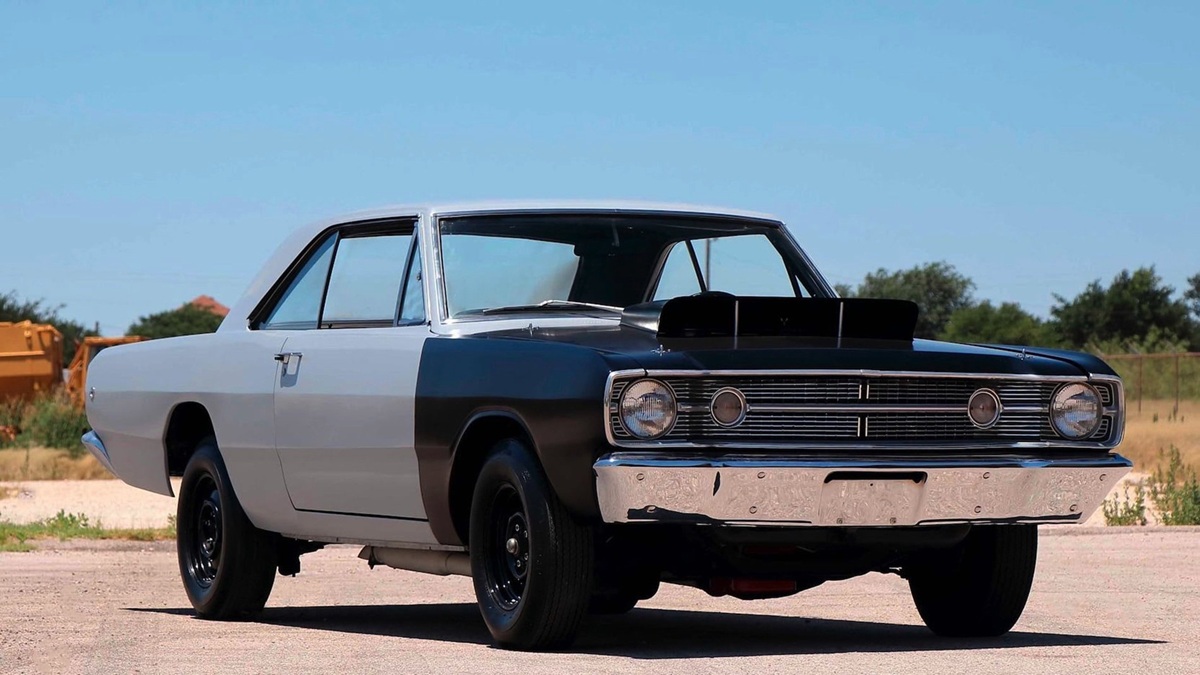
Every ounce shaved, every part chosen, every element engineered – all with one thing in mind: to dominate the strip.
To reduce weight and maximize speed, the front fenders were swapped out for fiberglass units, finished in a raw black gel coat. The front side marker lights? Omitted. The scooped fiberglass hood, lightened steel front bumper and stripped-out steel doors contributed further to its no-nonsense race attitude. Even creature comforts were cast aside – the heater and rear seat were deleted, and window mechanisms replaced with 27-inch-long adjustable seatbelt straps. The side windows featured ultra-thin .080-inch Corning Chemcor glass, while the quarter glass was rendered non-functional.
Inside the stripped cockpit, a Hurst shifter stood ready for action. Enlarged rear wheel openings hinted at the serious hardware underneath, and the “999” paint code indicated primer – not a final coat. After all, this wasn’t built for looks. It was built to win.
Beneath the skin, serious engineering choices underscored its single-minded intent. An offset master cylinder with flexible lines managed brake fluid duties. A special steering arm and front disc brakes with a 4.5-inch bolt circle (front and rear) ensured precise stopping power. Out back, #002 and #003 Super Stock leaf springs anchored the launch.
This wasn’t just a car. It was a statement – and it spoke in quarter-mile times.
426 RACE HEMI ENGINE
At the heart of this machine was a pure race-bred formula: a 12.5:1 compression ratio powering cast iron heads and an aluminum cross-ram intake setup. Topping it off were twin #4160 Holley 770-cfm four-barrel carburetors, breathing life into each launch. A high-capacity oil pump kept everything lubricated under pressure, while deep-groove pulleys and a Prestolite transistor ignition system delivered reliable spark. A dual-point distributor with a cable-drive tach ensured accurate rev tracking. For shipping purposes, the car retained a stock oil pan – but once track-ready, Hooker competition headers and minimal exhaust routing with glasspack bullet mufflers took over.
Transmission options matched the aggression. Four-speed cars ran a heavy-duty 10.5-inch clutch with a safety steel bellhousing and sent power to a Dana 60 rear axle, complete with 9¾-inch ring gear and brutal 4.88:1 gears. TorqueFlite automatic versions weren’t dialed down either – equipped with manual-shift function, high-stall speed torque converters and pumpkin-style 8¾-inch differentials fitted with 4.86:1 gears. All setups featured Sure-Grip rear ends and a 135-amp/hr Super Stock battery mounted in the trunk to optimize weight distribution.
With a race-ready curb weight of just 3,020 pounds and a jaw-dropping weight-to-horsepower ratio of 6.10, these cars were classified as SS/B and SS/BA. In 1970, NHRA recognized their blistering performance and bumped them up to SS/A and SS/AA classes – right where they belonged.
How fast? Mid-10s on the quarter-mile. All day long.
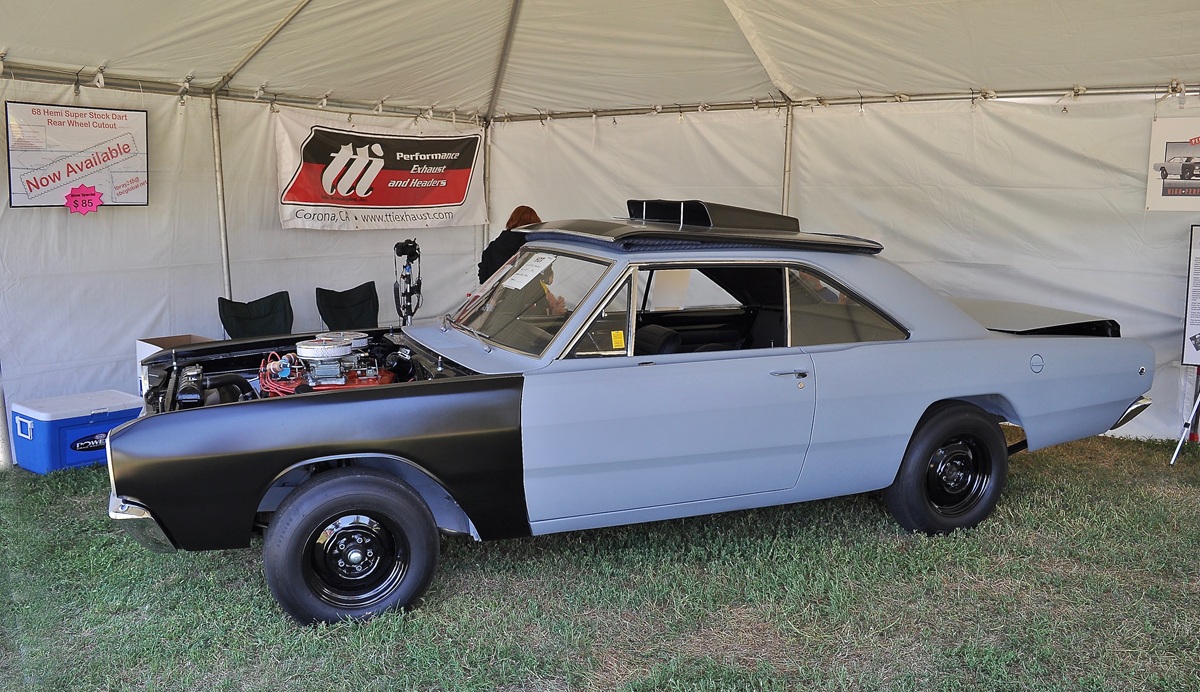
This is actually a “tribute” that was done to replicate the look of an LO23 car as it left the Hurst Facility in Madison Heights, MI.
Some familiar Mopar racer names that received original LO23 cars: Bill Bagshaw, Shirley Shahan, Butch Leal, Bill Flynn, Charlie Castaldo, Joe Jill, Melvin Yow, Max Hurley, Reid Whisnant, Mary Ann Foss, Herb McCandless, Larry Griffith, Harry Holton. And, of course, the main sponsored door-slammer Dodge for the era, Dick Landy!
SPECIAL FEATURES
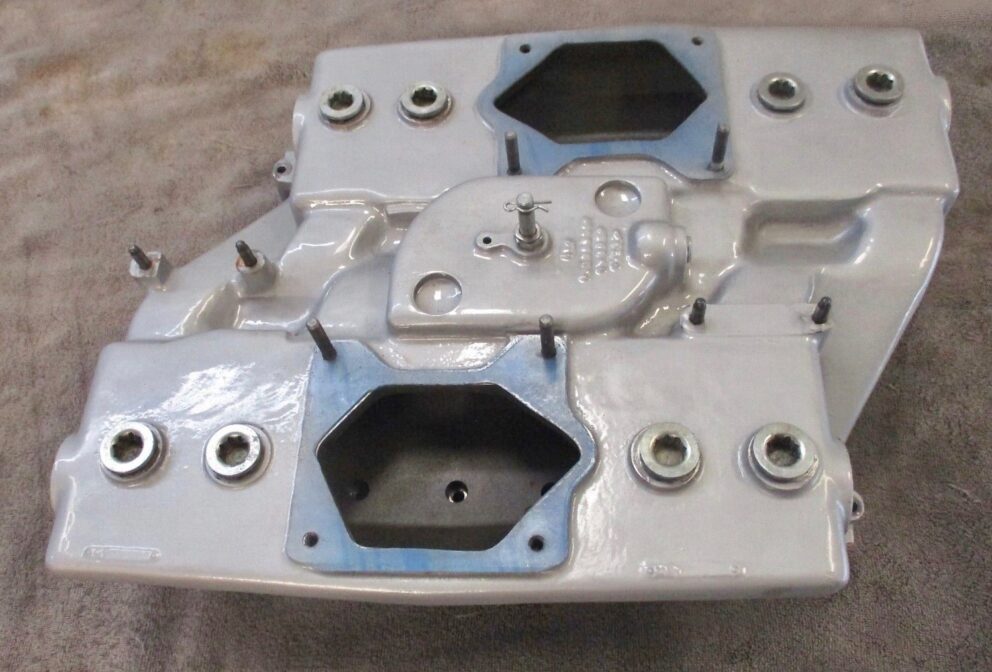
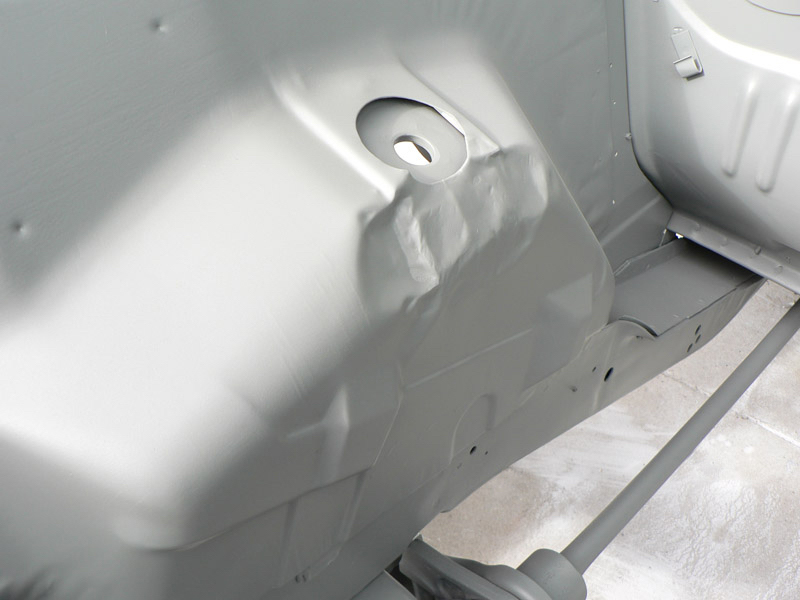
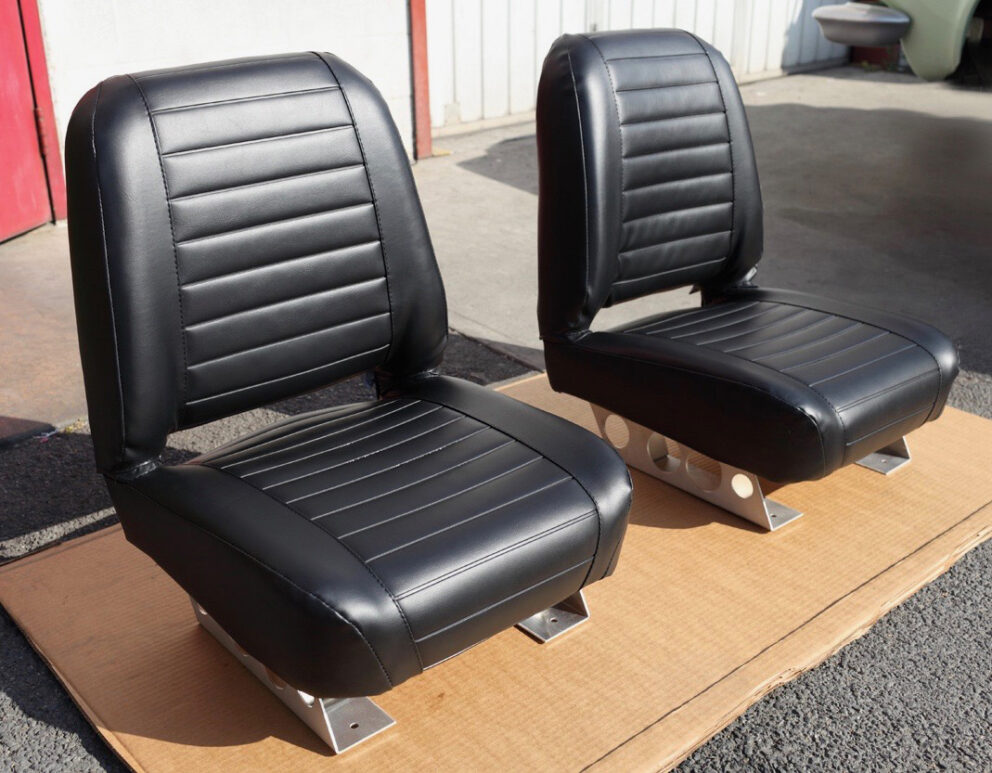
Unique factory features that were done to that fleet of 80 LO23 cars included the following.
Aluminum one-piece cross ram intake, incorporating center stud mount linkage.
Passenger’s side inner fender received numerous heavy blows with a hammer at the Hurst facility, providing clearance in order to remove and replace the RH-side valve cover. That’s how it was done with perhaps no two exactly alike!
Bostrom A-100 van seats with aluminum mounting brackets, lightweight units.
HEMI ENGINE AS DELIVERED
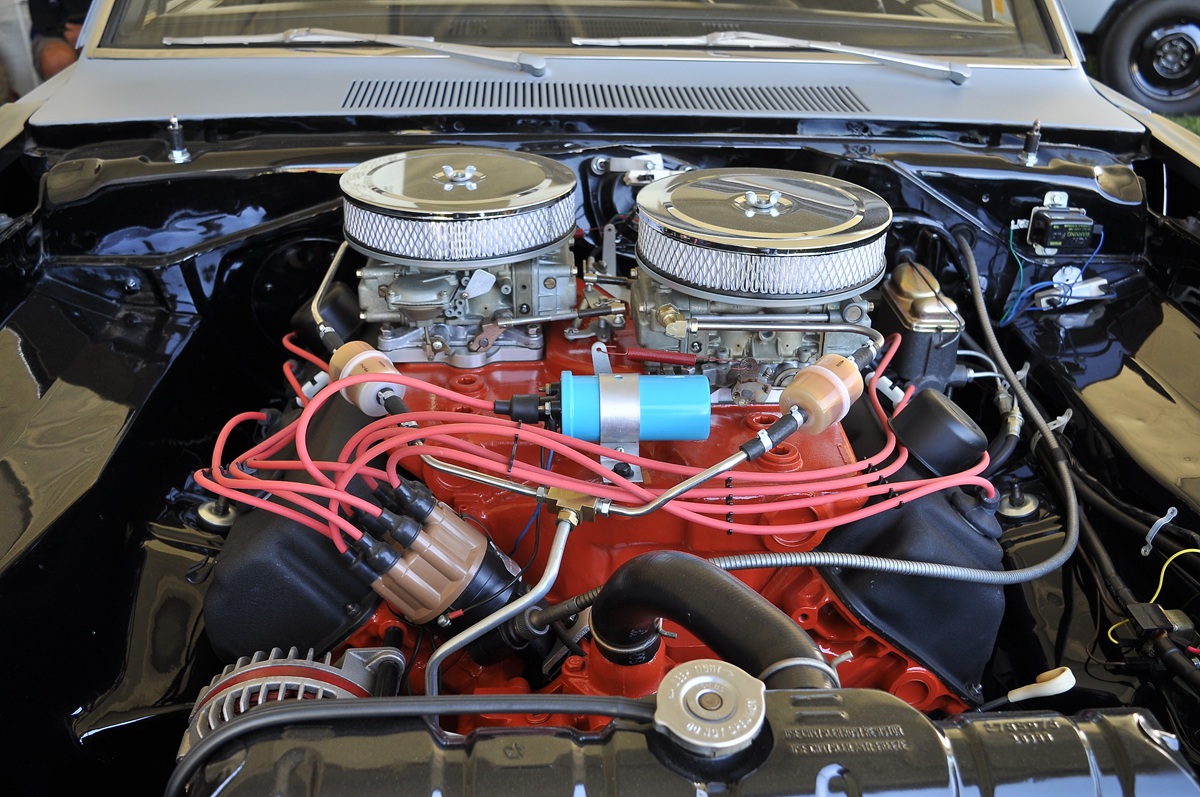
Note: This is a “re-creation” 1968 LO23 race engine built to represent how they looked when delivered to the racers in 1968, the shown Cal Custom-type air cleaners were not items that were part of the HEMI S/S factory equipment.
INITIAL COST?
How much was the LO23 Dart? Well, except for top factory hero Dick Landy ($0), there were a few different prices. The least expensive way was to save on any destination charges and pick it up at the Hurst facility. For the others, the MSRP was $5,146.00, plus destination charges, for either the TorqueFlite or 4-speed cars. A published ad had Creveling Dodge in South Texas advertise one at $4,295 (describing it as having “acidized” doors). That was a retail price. Some dealers made special deals for local racers that ran their dealership name on the car. There were Mr. Norm invoices showing costs of $4,695.
AS RACED CIRCA 1968-1969
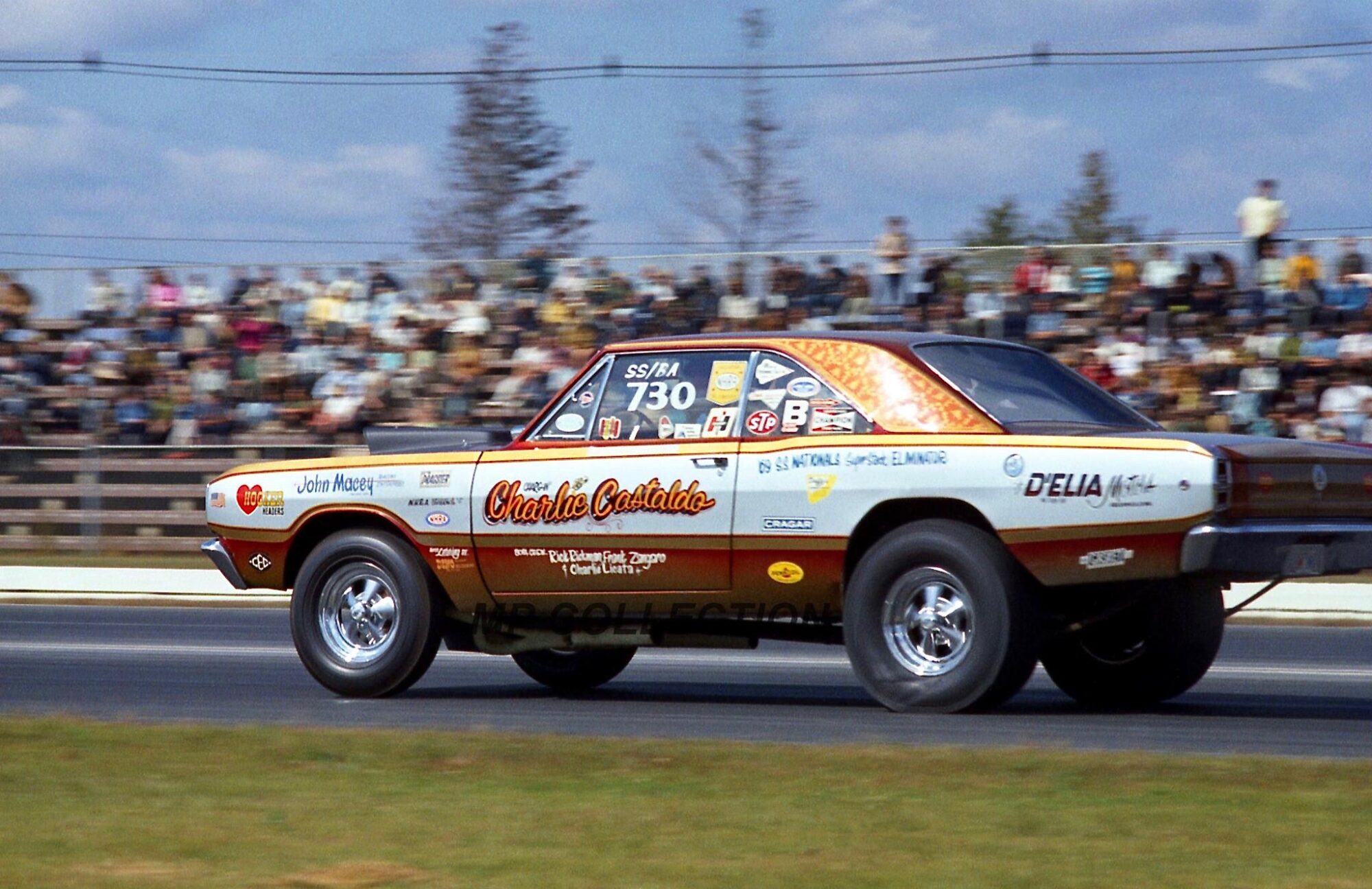
Racers quickly painted their HEMI Darts as soon as they got them in 1968, and preparation including fine-tuning their engines (with preferred camshaft lift and profile of their liking, oiling system revisions, etc.) and the fitting of their wheel/tire combos, which for certain saw the Cragar S/S as a favorite. Here’s one of the Charlie Castaldo HEMI Darts; he was based out of Scarsdale, NY, andran a 4-speed car plus an automatic version.
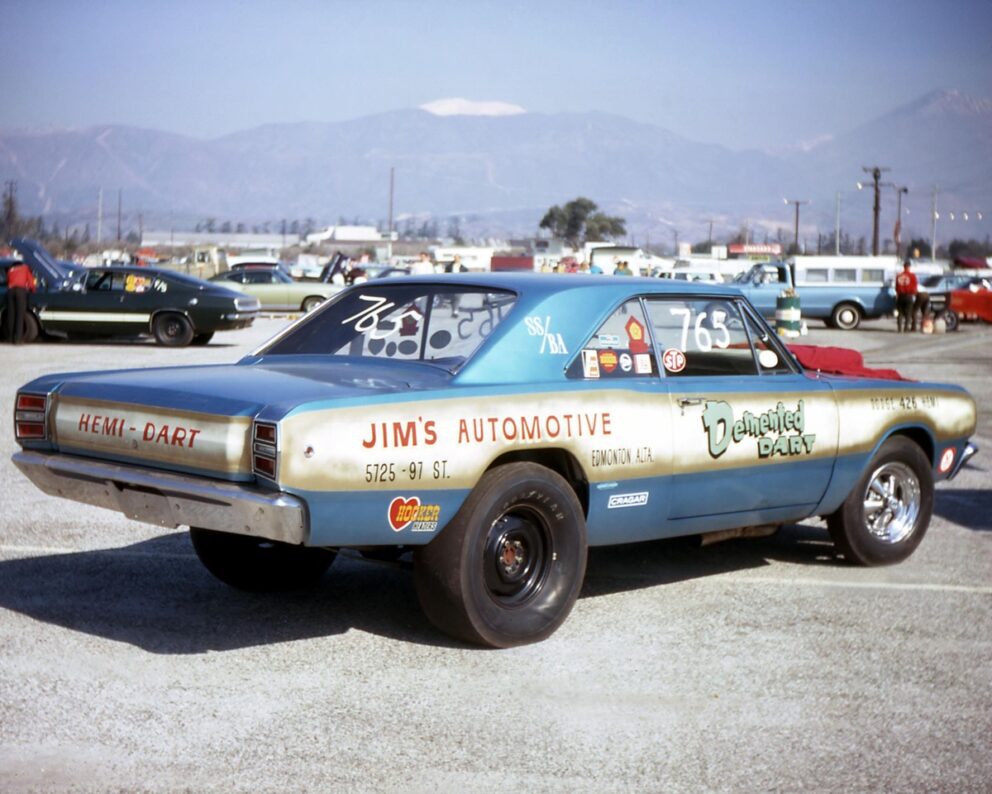
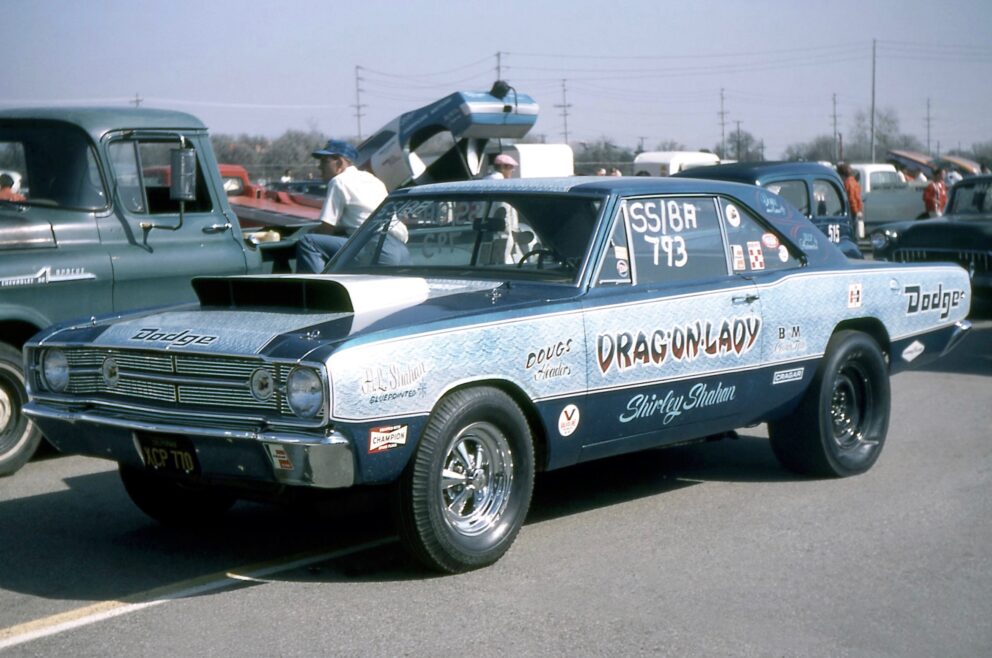
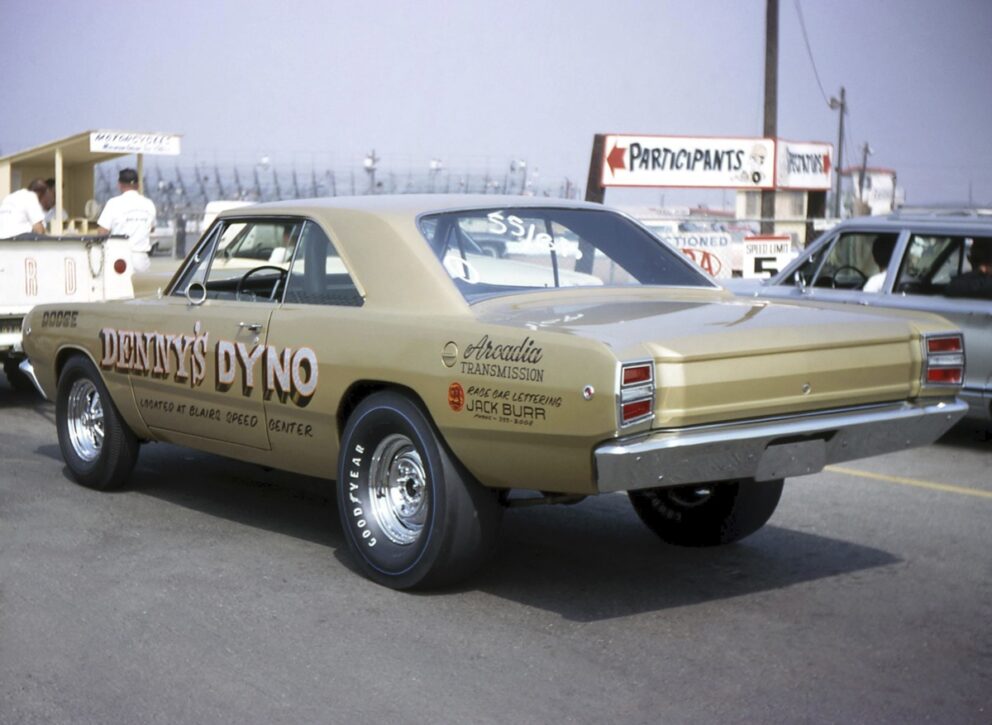
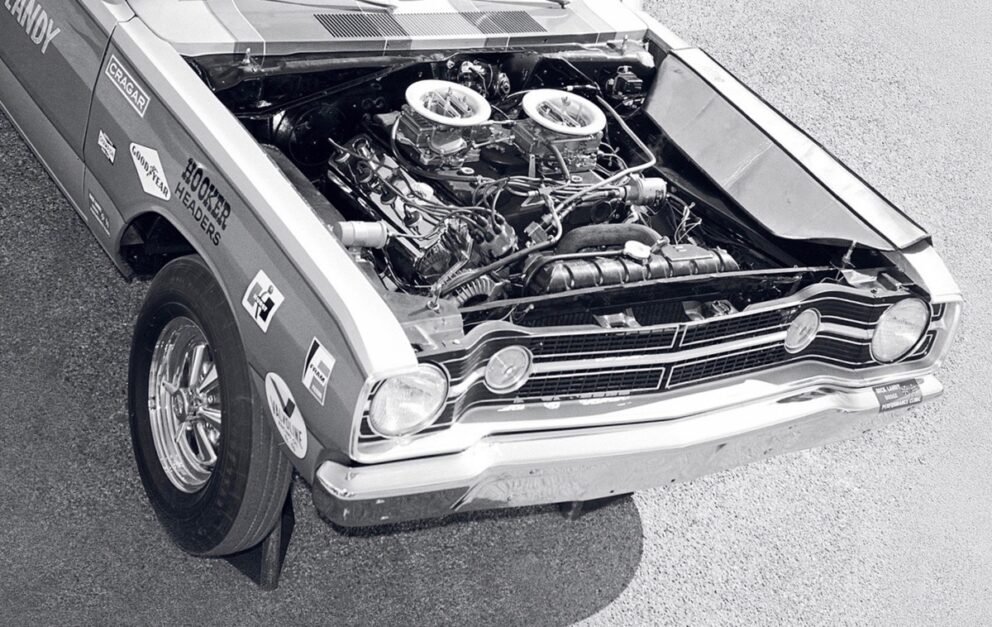
The LO23 cars in those first two years were campaigned all across the country, some big names, some local racers, and as the 80 cars were sold off and (some) crashed, it takes some real detective work in figuring out which car went where, and as always, the possibility of a recently discovered “barn find” that would need VIN verification.
MOST FAMOUS OF ALL
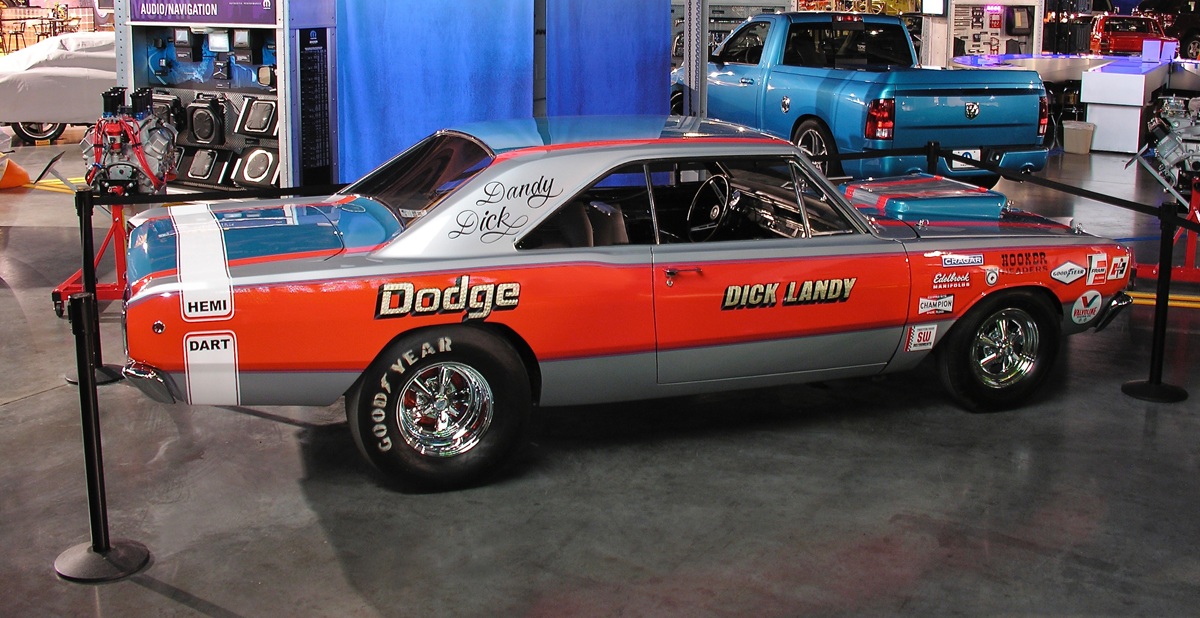
Well, actually, there were two “most famous of all” of the original LO23 cars, both of which were sent to Dick Landy in California and actively raced (one an automatic, the other a 4-speed manual). This is the Landy 4-speed car, and it won in the Modified Production class at both the 1968 and 1969 NHRA Winternationals at Pomona. The car ran a 10.46 at 131.19 mph at OCIR in October of 1968. Both Dick Landy and Bob Lambeck drove the car in competition. VIN L023M8B297859
This car saw duty in both NHRA Super Stock and Modified Production classes back in the day by Landy himself. It sold for $220,000 at the Mecum Harrison, PA, 2019 auction.
CONVERTED TO MODIFIED PRODUCTION
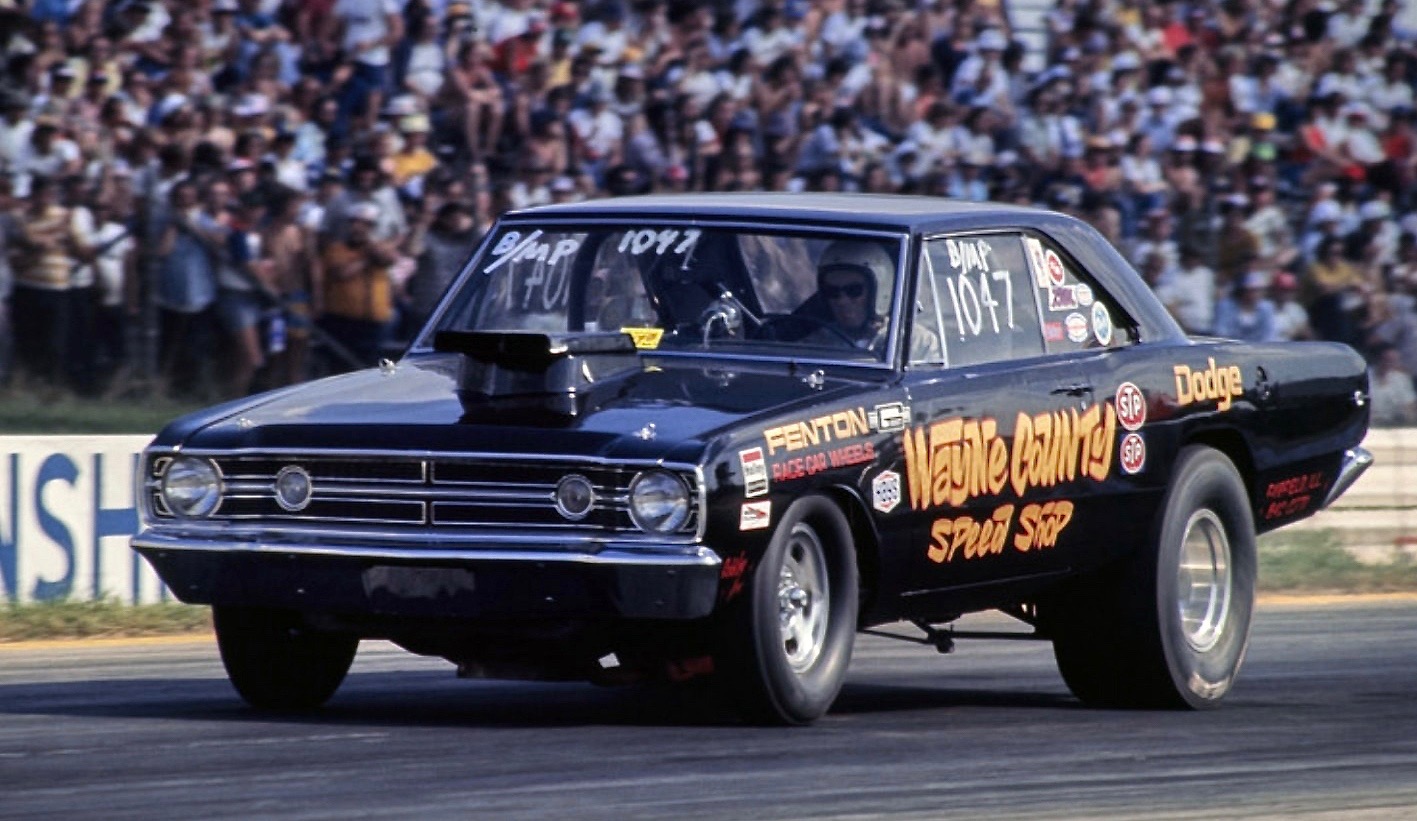
As time went on, many of the original HEMI Darts S/S were “re-purposed” to other faster classes in the NHRA, as shown here with the Musgrave & Sullivan B/Modified Production version out of Division Three. Wayne County Speed Shop went on to become a very familiar name in Mopar Pro Stock drag racing years later.
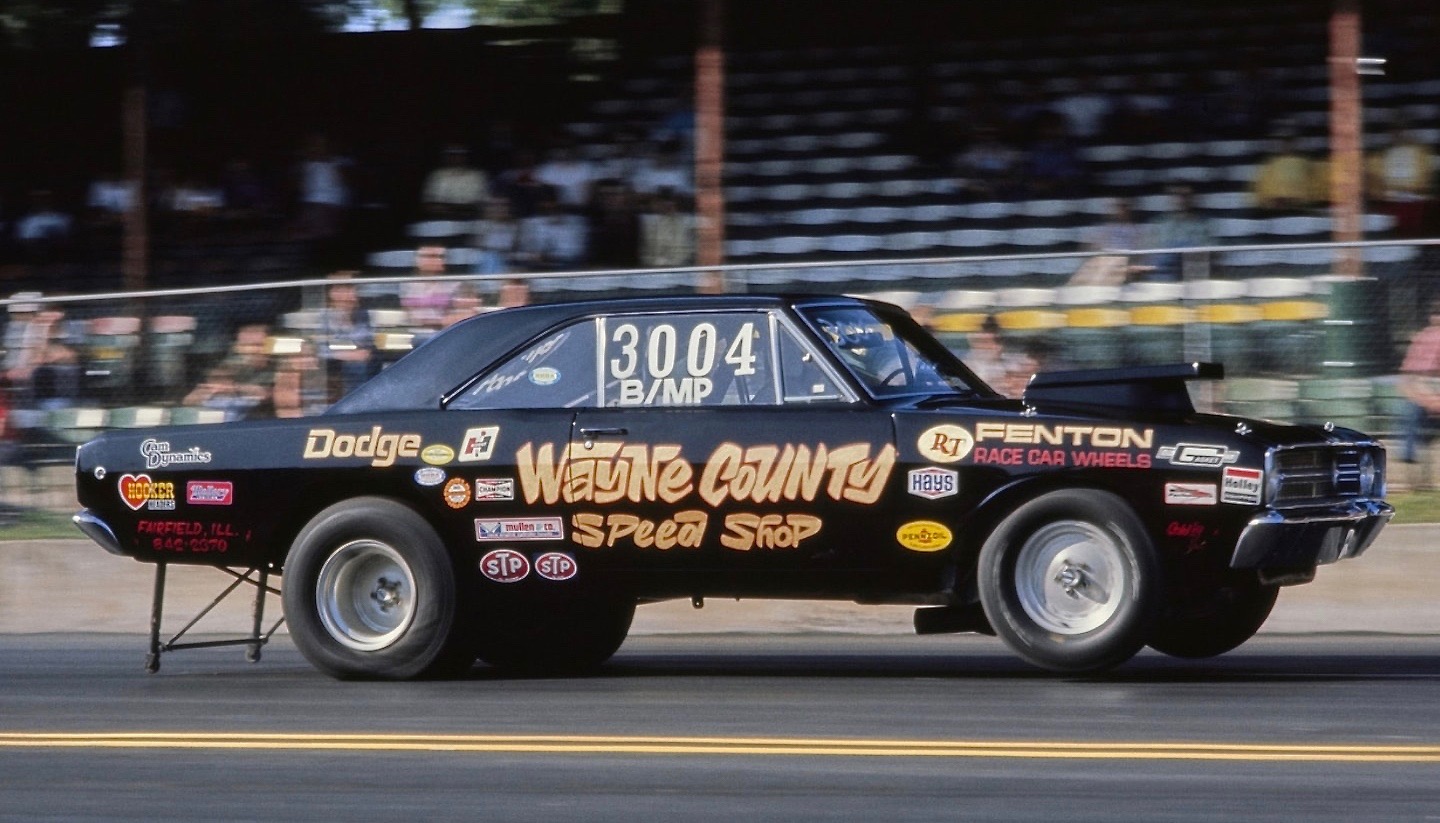
EARLY IN PRO STOCK CLASS
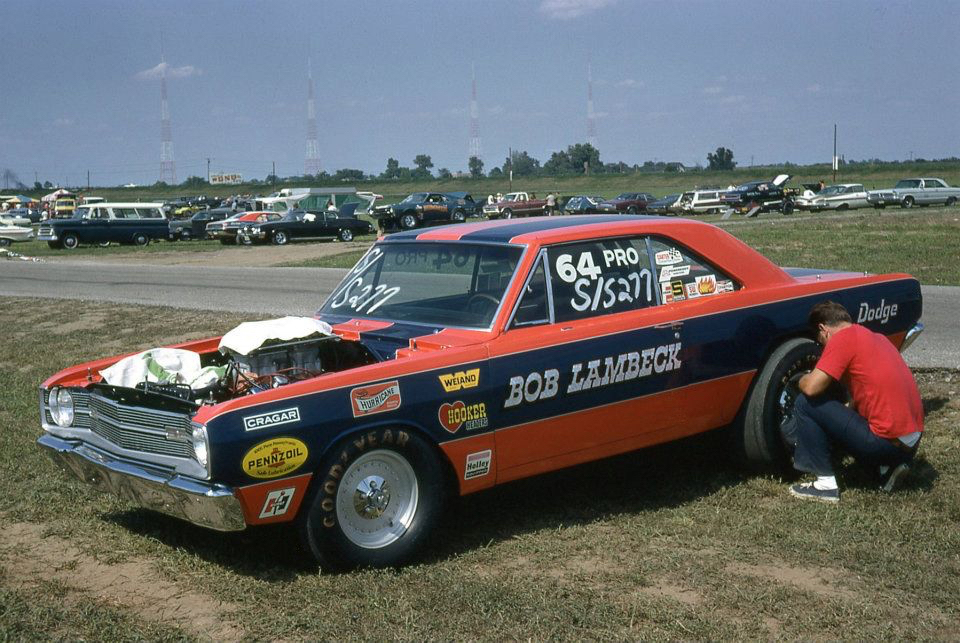
For a short timeframe, a handful of LO23 cars were reworked and fitted with tunnel ram intakes moved up to the new-for-1970 NHRA Pro Stock class. This Lambeck car was upgraded with a Weiand tunnel ram intake induction. The Dart is fitted with the then-recently released Cragar “Super Trick” wheels, spun-aluminum lightweight drag only wheels (15 x 3 = 9 pounds). For a newer appearance, the car was fitted with a 1969 grille. He campaigned it for a short time in the brand-new Pro Stock class. For the factory-backed Mopar teams, they had them run 1970 E-body racecars. After all, Mopar was in racing to help sell vehicles on the dealership showroom floors!
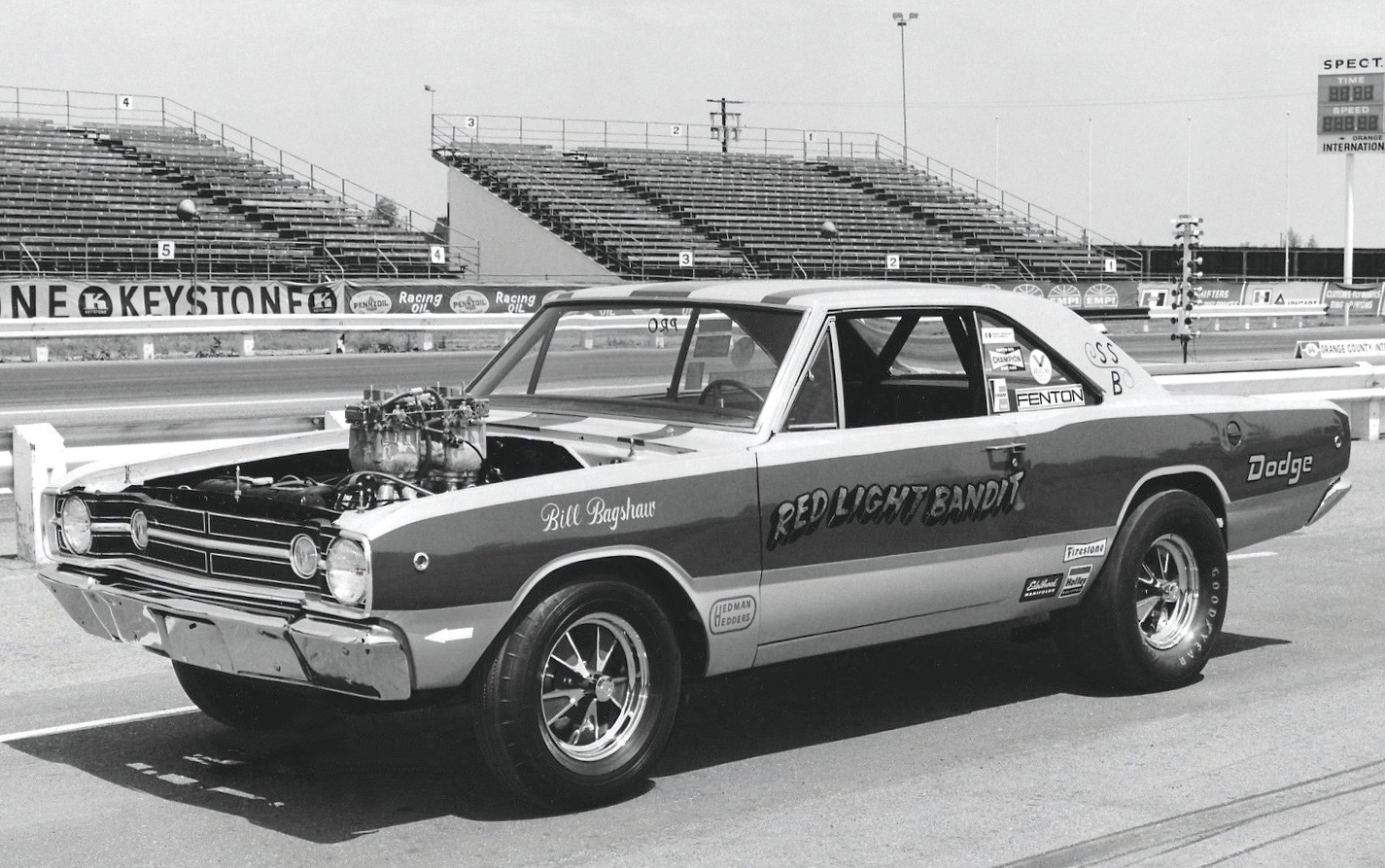
This is an original 1968 LO23 car (front side marker lights were added) that saw duty in the early days of Pro Stock racing. “Red Light Bandit” was what Bill Bagshaw named his cars, and the HEMI engines were built by Joe Allread. As equipped with an IR Edelbrock tunnel ram intake, this is an early 1970 shot taken at OCIR and on the passenger’s side window the “Pro” marking is shown.
AUCTION ACTION
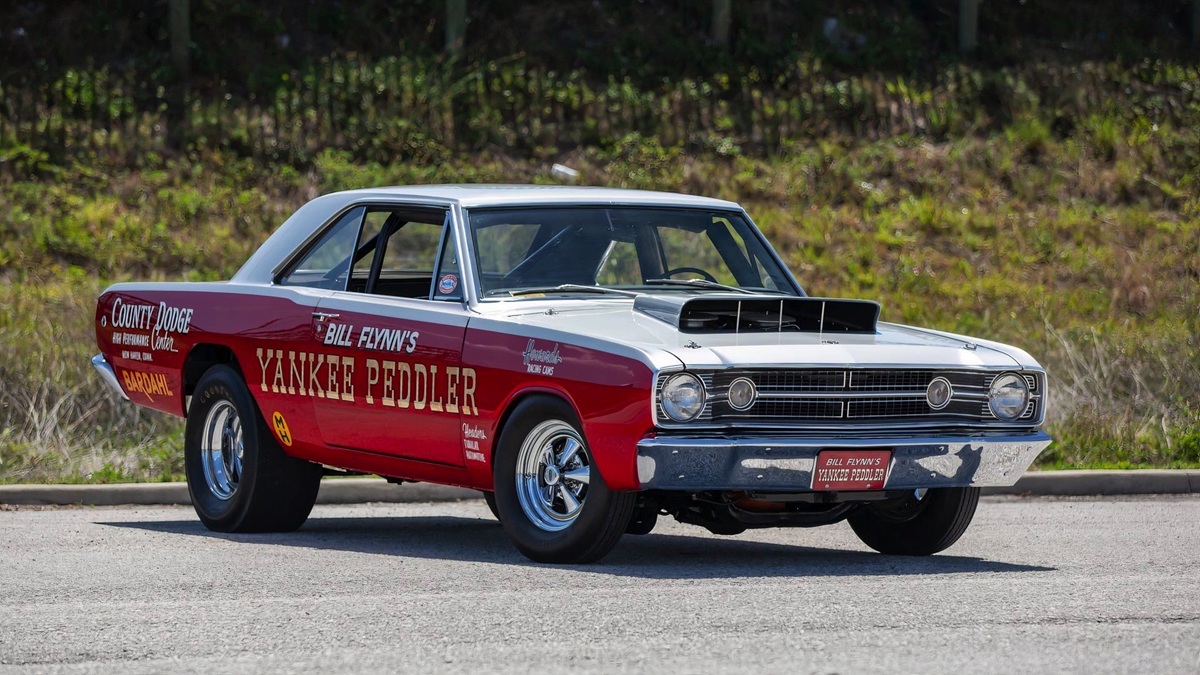
Coming out of the Todd Werner Collection, this LO23 (LO23M8B297900), a 4-speed car, sold for $159,500 at the Harrisburg 2019 Mecum auction. Restored with period paint, as campaigned by Bill Flynn, full roll cage and fitted with Cragar S/S wheels.
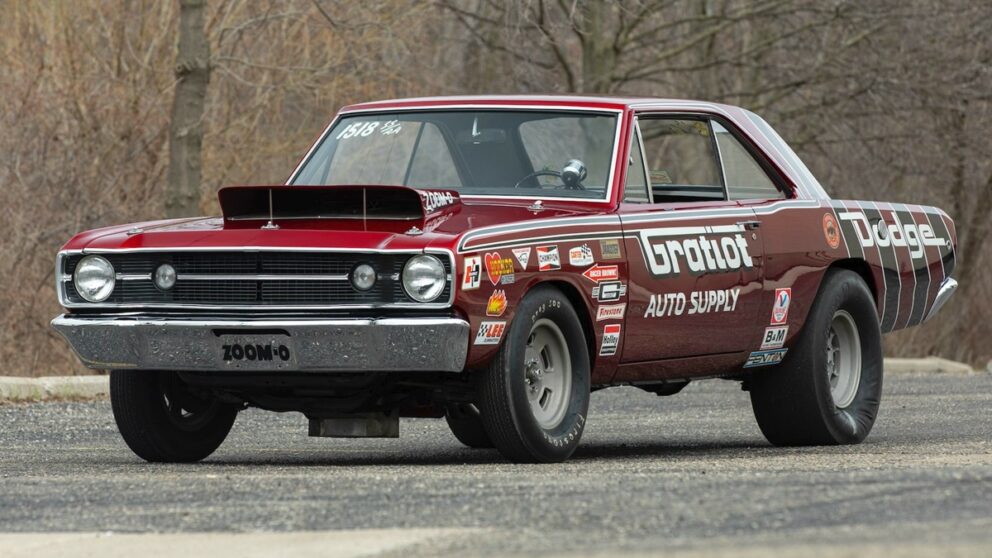
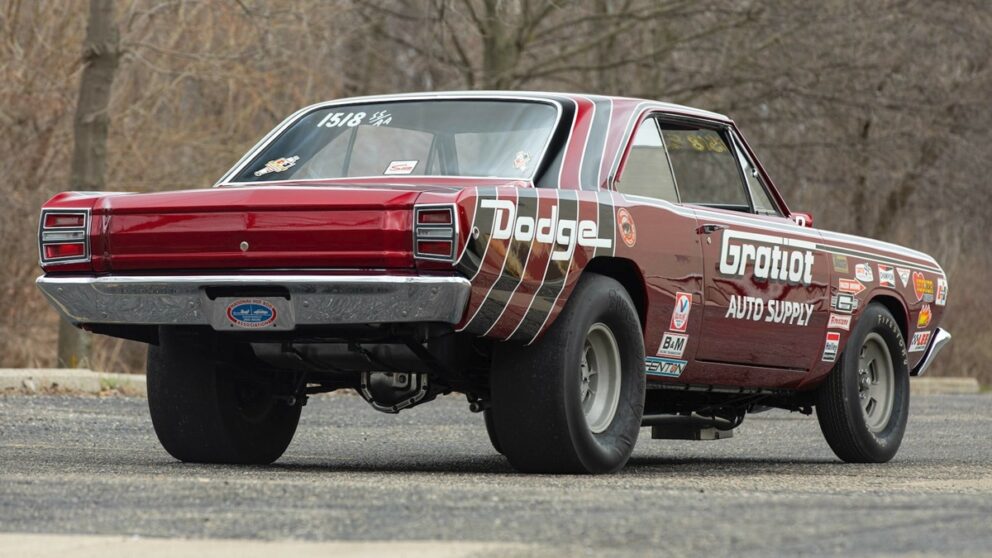
The Ron Mancini SS/AA L023 car (LO23M8B297860) was a “no sale” at the 2022 Mecum Indy auction with high bid of $130,000. This car won both the 1970 NHRA Summernationals and the 1970 U.S. Nationals at Indianapolis, where it set the national ET record at 10.33 seconds. Main sponsor was Gratiot Auto Supply.
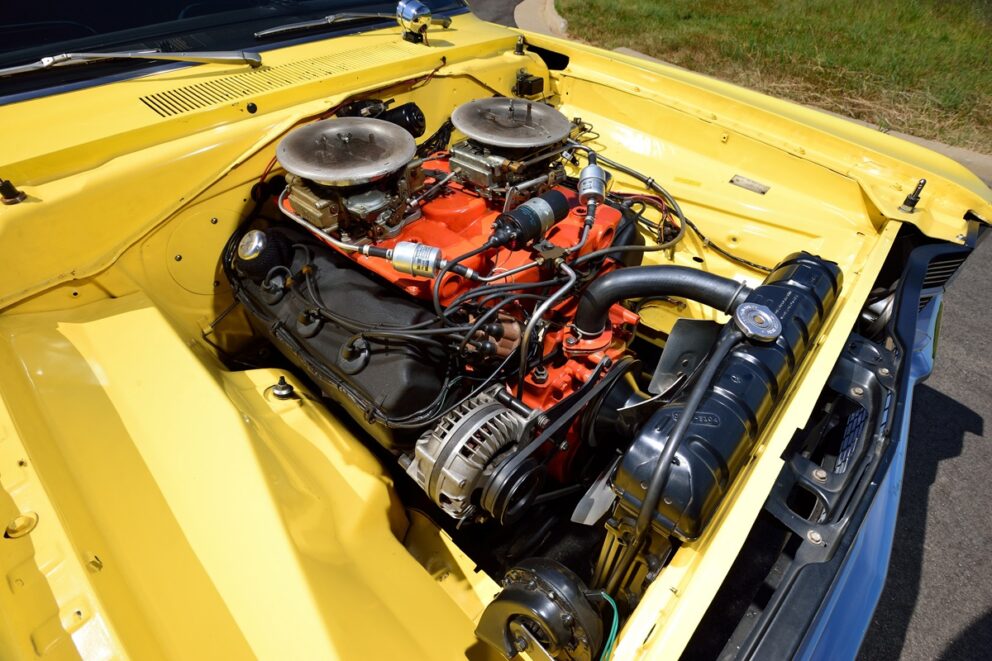
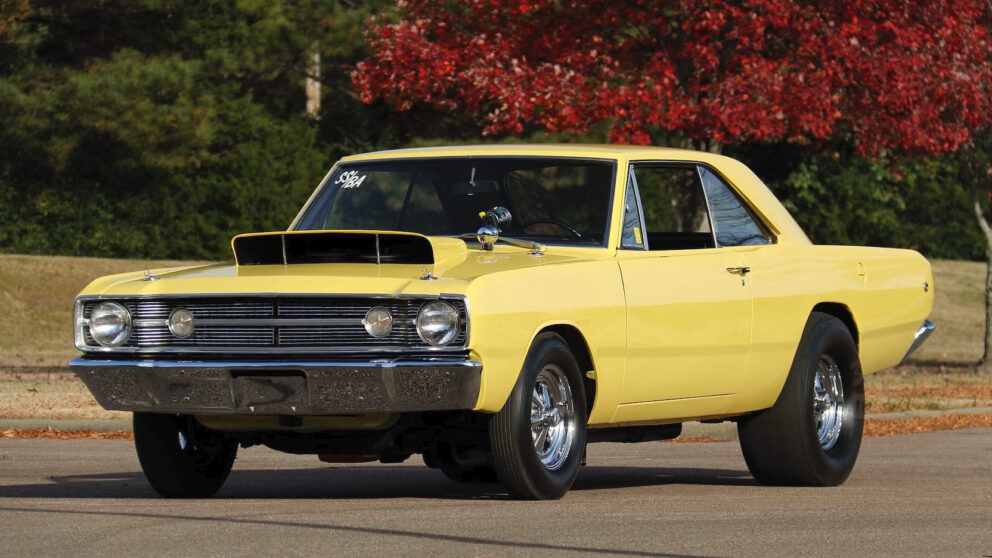
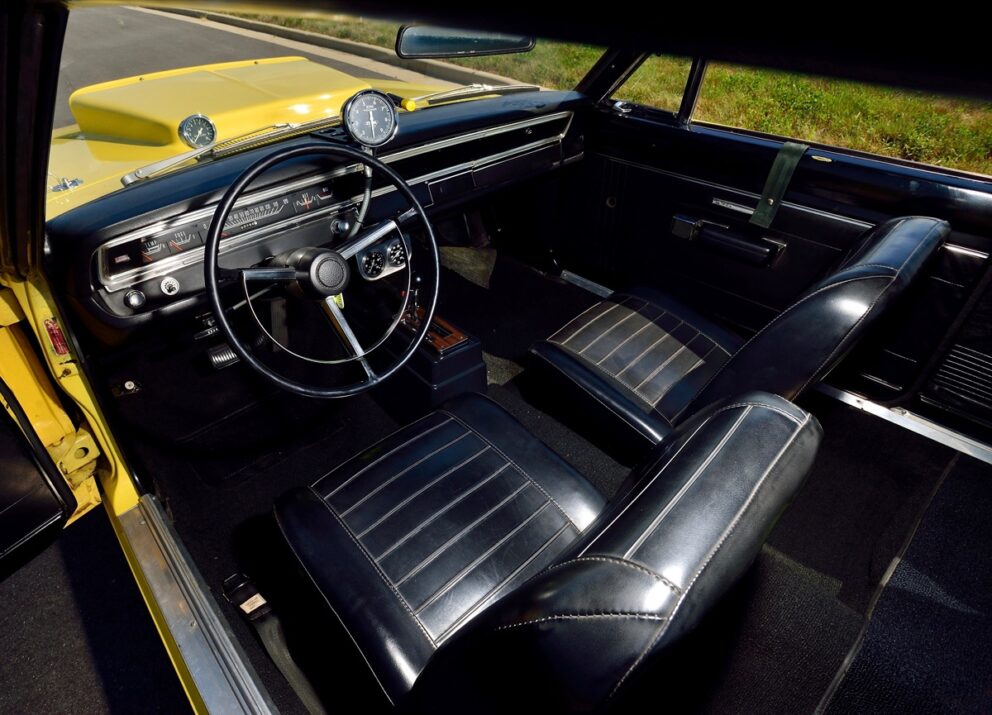
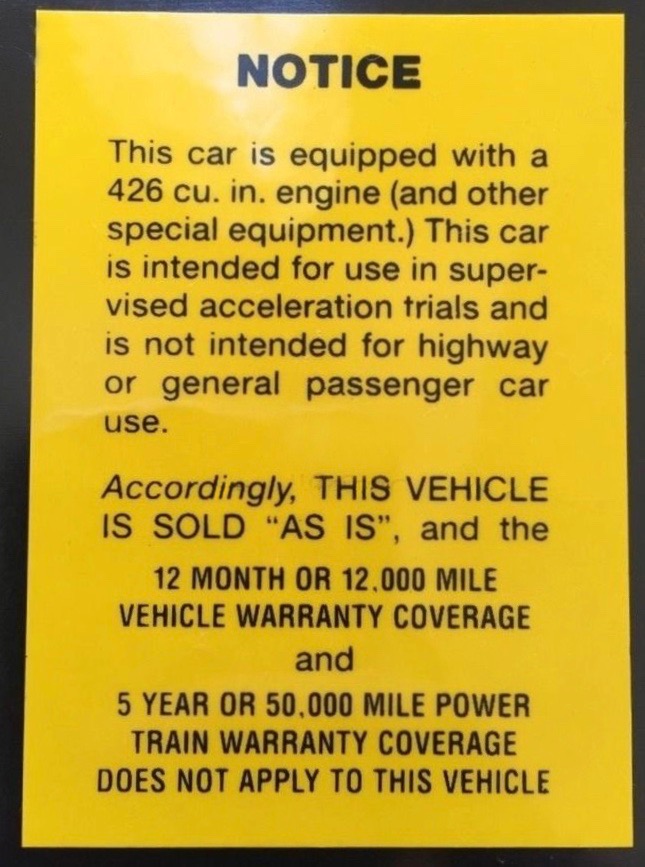
Listed as having 3,800 miles on it, this LO23 (LO23M8297862) automatic car was at one time owned by Lou Mancini of Mancini Racing, an original Mr. Norm’s car (meaning sold at Grand-Spaulding Dodge). This particular car sold at the Kissimmee 2022 Mecum auction for $302,500.
L023 STREET DRIVEN
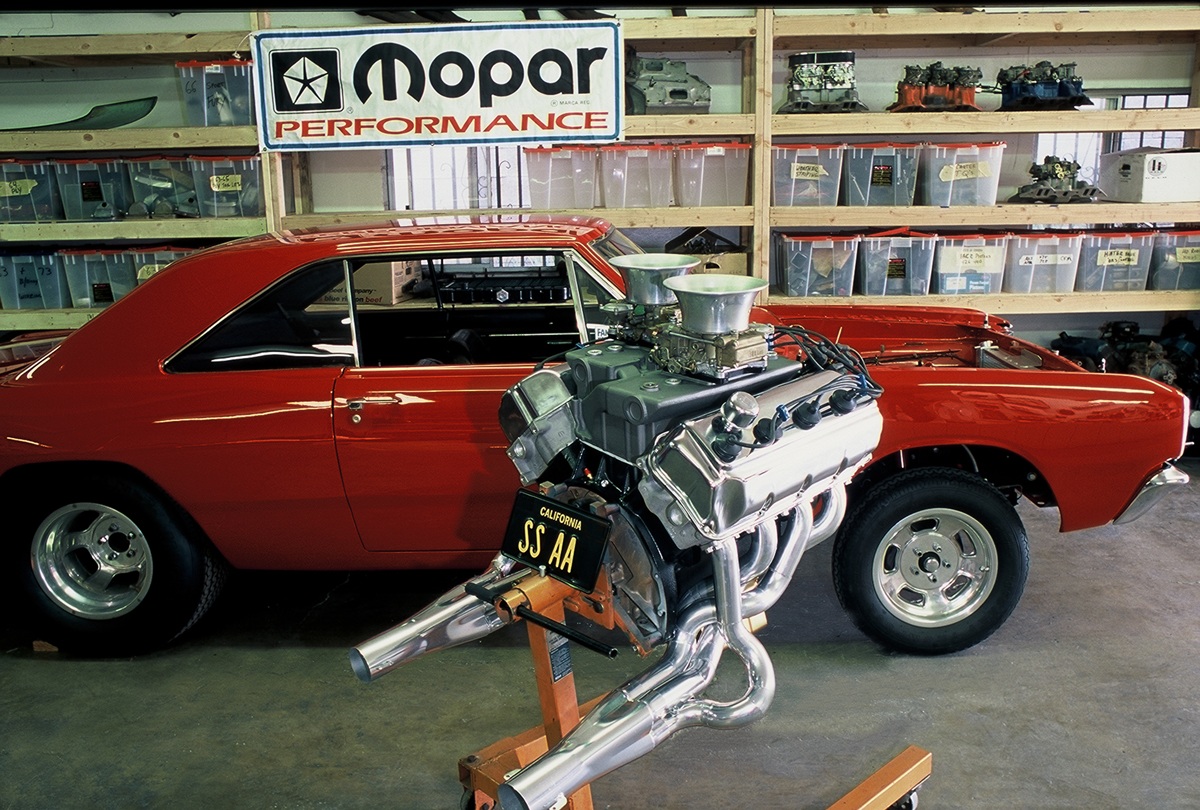
Even though the factory stated these cars were not for street use, it wasn’t too difficult to get the DMV to license one, as in the case of the pictured “real” car that has replacement HEMI powerplant with aluminum cylinder heads.
SS/AH
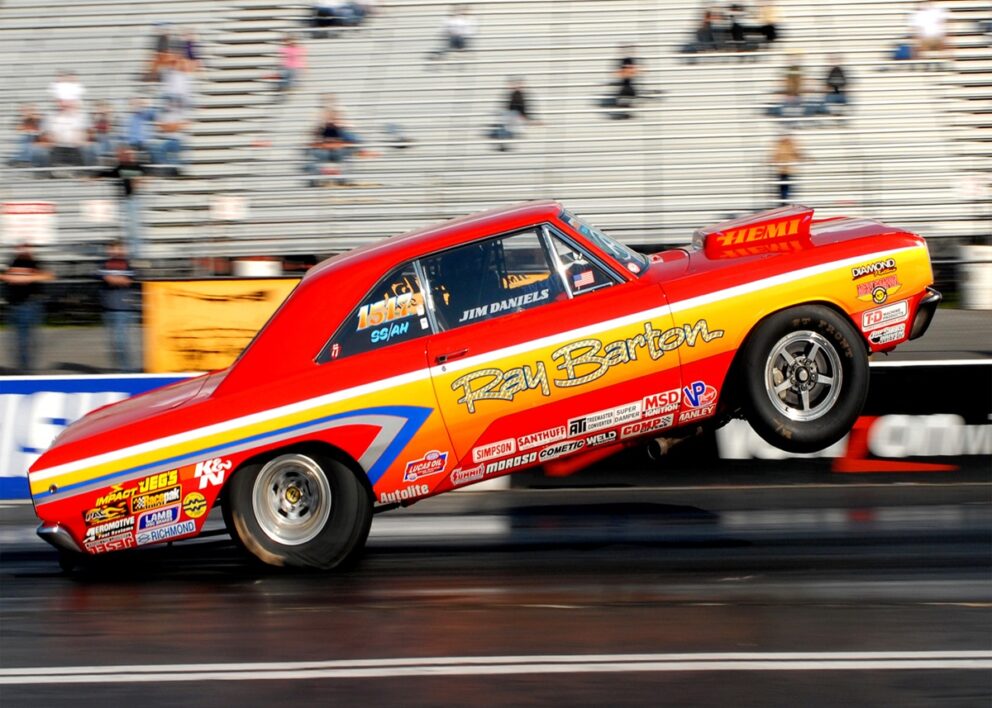
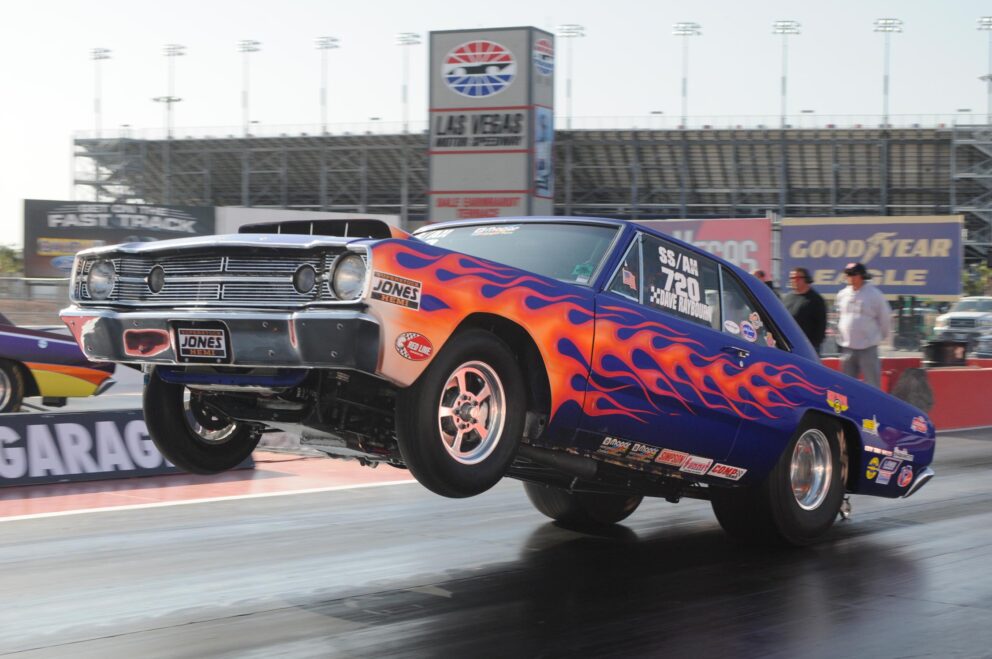
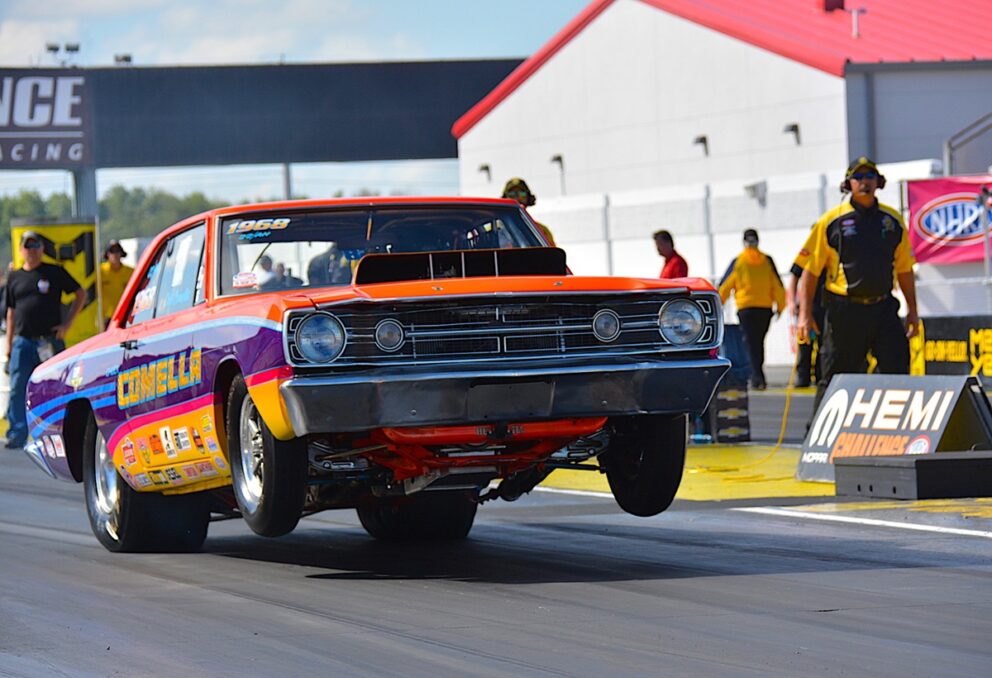
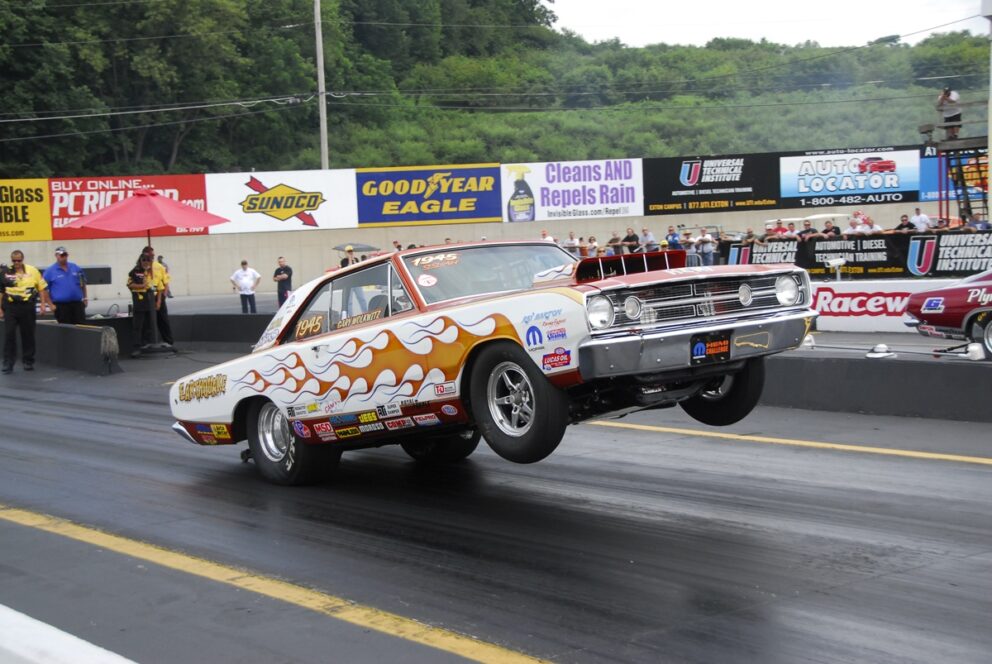
The modern era SS/AH (H stands for HEMI) is a special class that is reserved for 1968 A-body cars, and the rules have been opened up in numerous ways. They are basically the “Pro Stock” cars of NHRA Super Stock Sportsman class! The low-to-mid 8-second runs at 160+ miles per hour are performances that nobody could have imagined in 1968 when these cars were released!
MODERN INTAKE MANIFOLD
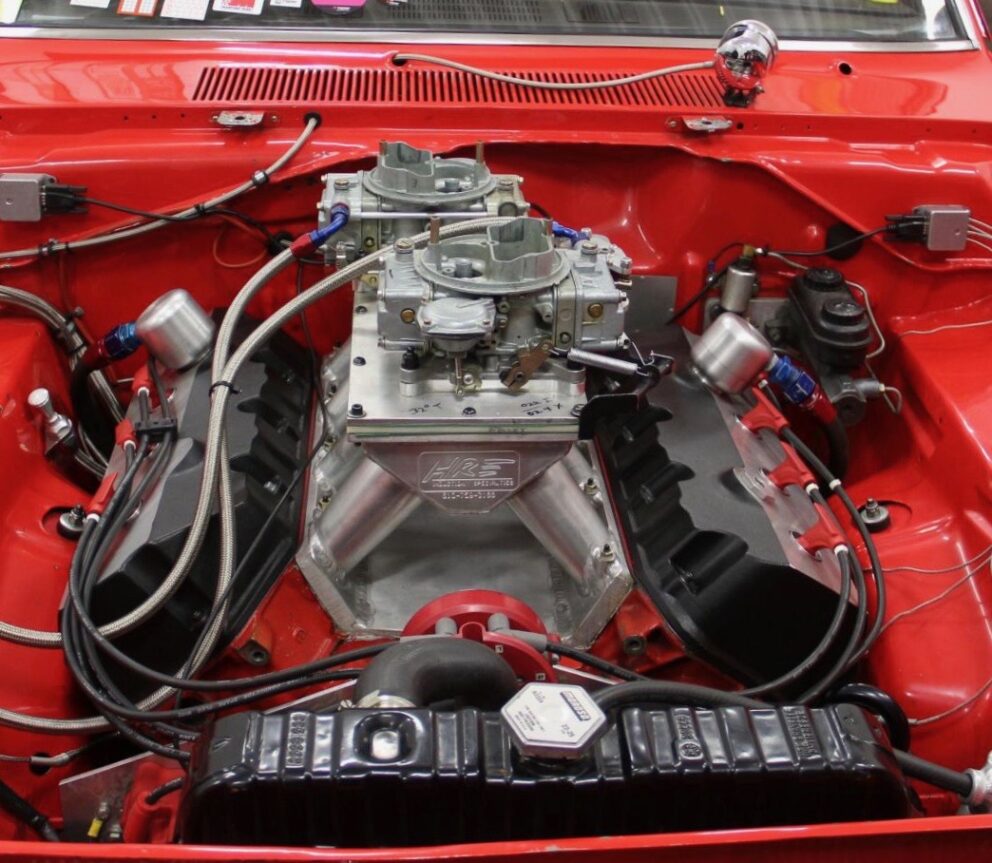
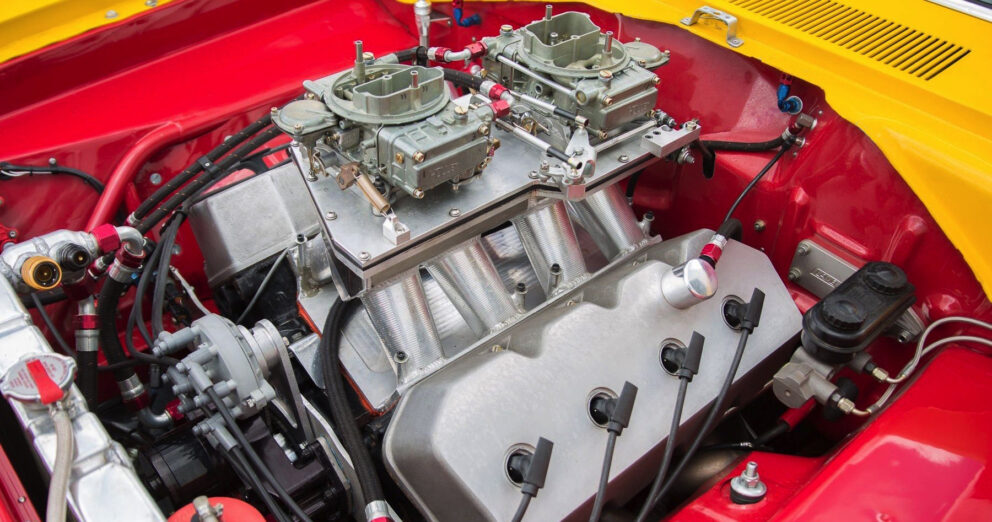
“Any intake manifold permitted provided unit is of same configuration as originals and will fit under original factory-produced hood. Cross ram must remain cross ram.” That’s how the NHRA Rulebook reads. So technically, the modernized SS/AH intake manifolds are still a cross ram since the carbs are slightly offset, barely!
L023 DIECAST
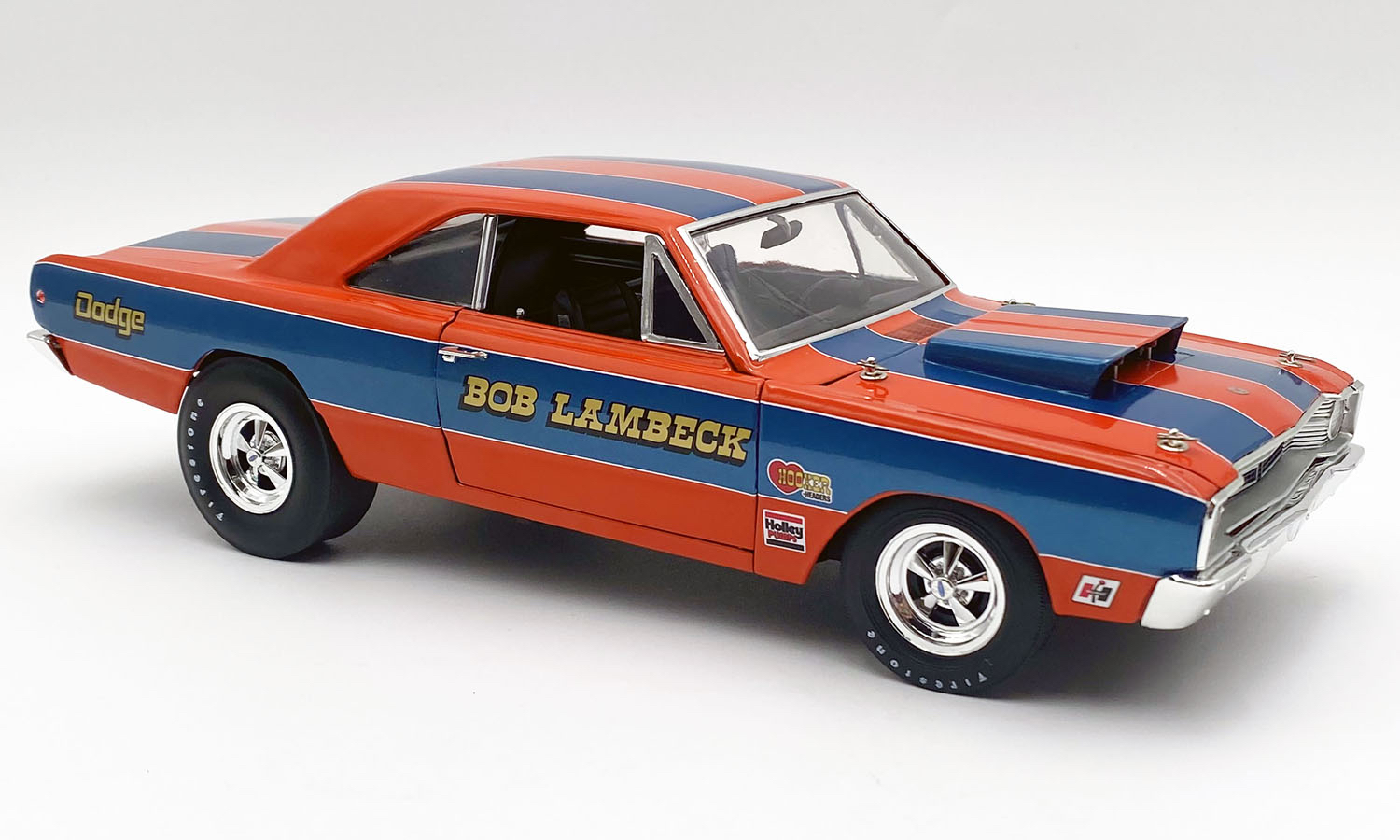
ACME released this year a 1:18 scale 1968 LO23 HEMI Dart diecast, SKU # A1806411. A well-detailed miniature of the Bob Lambeck car which ran out of Southern California back in the day.
WELL DETAILED
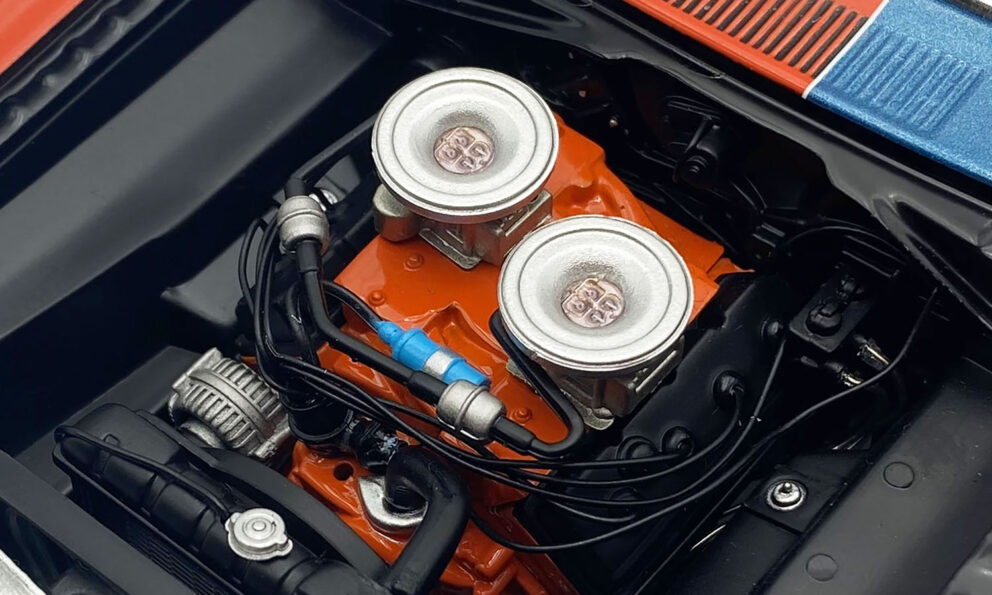
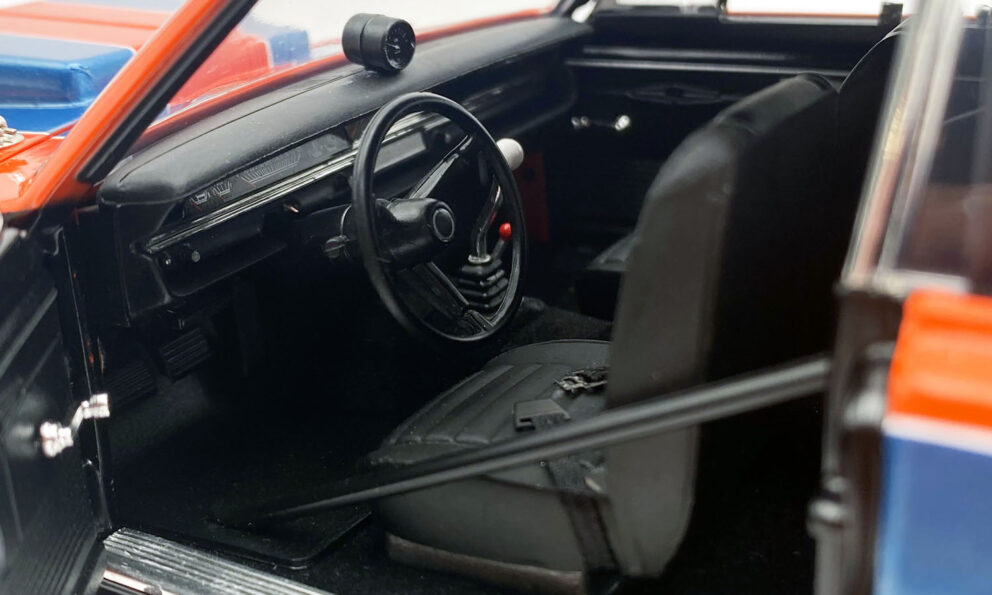
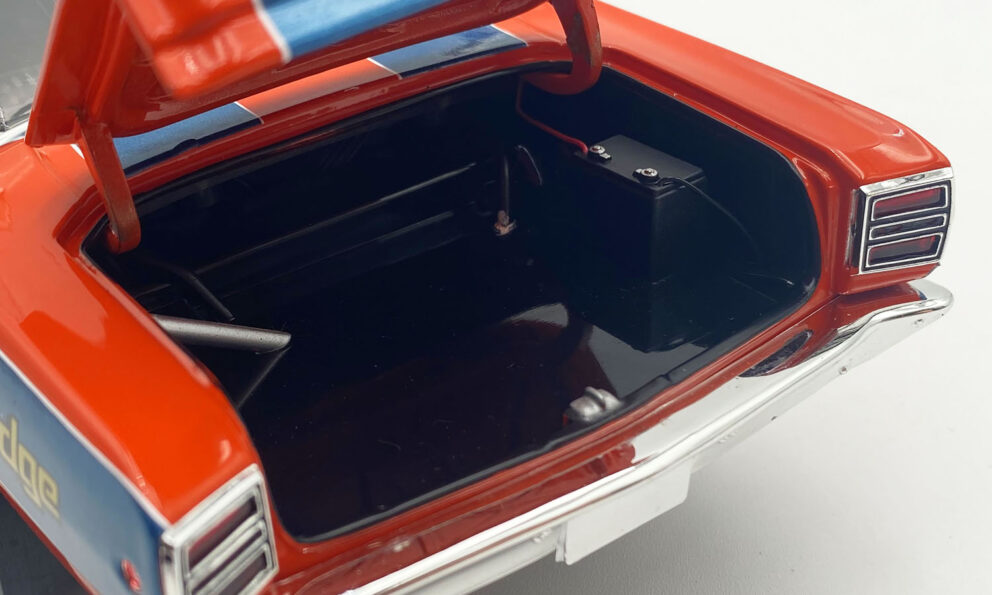
Correct color scheme, Cragar S/S wheels, Hurst 4-speed shifter with white ball, dash-mounted tach, competition roll bar. Removable hood with four hood pins, opening doors and decklid. HEMI engine correct orange color, blue-painted ignition coil, dual fuel filters, carburetors with velocity stacks on cross ram. Battery mounted in RH-side of trunk.
Recommendations:
Suggested reading: “AUTHENTICITY GUIDE, 1968 DART & BARRACUDA HEMI SUPER STOCK” 125 illustrations, 54 pages in coil-bound, plastic softcover format. By Jim Schild with Larry Griffith.
The “sister” car from Plymouth
Video: Herb McCandless with his original LO23
Author: James Maxwell
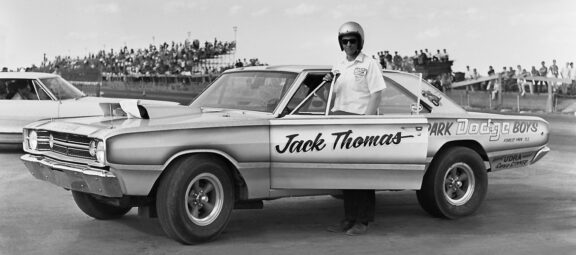
0 Comments